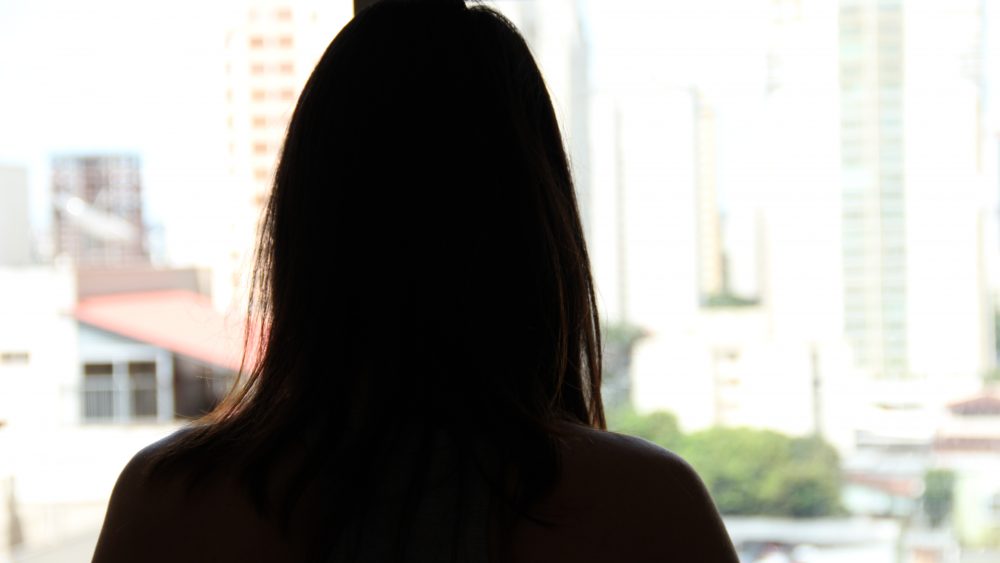A leading Australian Christian sexologist says that as many as one in 300-500 Australians experience some level of disjunction between their biological sex and gender identity (transgenderism), and that gender dysphoria (distress) is a real phenomenon.
The Victorian state government believes that transgender is a big enough issue to allocate $6.4 million of its 2016 budget to the expansion of gender dysphoria health services, to assist those who struggle with transgender issues.
Dr Patricia Weerakoon, a medical doctor turned Christian sexologist and writer, says transgender is an umbrella term, which basically refers to anybody whose role, behaviour or sexual orientation is not in keeping with what society would expect from a biological sex.
According to Weerakoon, there are two competing narratives at play in society.
On one hand, many people believe that gender is a simple matter of being born with either male or female genitals. She says this is an oversimplification and, “about one in 1500 children are born with ambiguous genitalia.”
On the other, there is a powerful current streaming through society telling us that our gender is not determined by anything, biological or otherwise: I am not what my body says I am; I am not who you say I am. I will be who I say I am.
As these two ideas clash, and the idea of gender identity grows in prominence, Weerakoon believes we are forced to ask how much of gender identity could be biological, and how much of it could be individualistic and hedonistic.
“There is a possibility that for some people, knowing the science as it is, the disjunction between their biology and their brain could be an innate characteristic,” says Weerakoon.
She says that Christians cannot simply cite the growth of an individualistic society to claim that everyone with gender identity concerns is individualistic.
“The most transphobic person I’ve had to deal with has been myself.” – Joan
Joan* is a 30-something Christian woman, who was born a biological male, and says of her former life, “I had the perfect life. I was in a happy marriage, I had a nice job, I lived in a nice neighbourhood. I had everything I wanted.
“Something wasn’t okay though, and I didn’t know what it was or how to articulate it.”
It turns out that “something” was that Joan was transgender.
“I tried to cut these thoughts out of my head. It’s not just ‘I feel like a woman’ or ‘I want to be a woman,’ it’s every decision about what you do or how you do it or what you use.” – Joan
“I spent six months trying to convince myself that it wasn’t true. The logical part of me was going, ‘all of this is adding up,’ but the other part of me was going, ‘but it just can’t be true, I don’t want it to be true, it’s going to ruin my life.’ And I fought this internal struggle for six months,” says Joan.
Following months of panic attacks and anxiety, Joan went to see her GP, with the words “I am transgender” written on a piece of paper. Following the advice of her doctor, Joan went to see a psychologist later that week, and then, following the advice of her psychologist, she told her minister the next day. Two days later she told her wife.
“The talking, arguing and debating with my wife went on for months. It never ended. Then we did our best to live with it as a fact in our marriage.
“I tried to cut these thoughts out of my head. It’s not just ‘I feel like a woman’ or ‘I want to be a woman,’ it’s every decision about what you do or how you do it or what you use,” says Joan.
“Getting dressed was extremely difficult because I had chosen elements of my male wardrobe that I had invented some feminine aspect of, that I could feel comfort in, that no one else understood because it was just a pair of pants or a pair of socks or a shirt or something, but to me I saw it (compared to my other clothes) as being more feminine, and I needed to comfort myself with that.
“I prayed that it would change. I wanted it to change.” – Joan
“I totally wanted to not think those thoughts, and I wanted to also do this very painful thing of trying to punish myself mentally for thinking them for the sake of my marriage.”
At the same time, Joan says, “I never thought it was a phase. I prayed that it would change. I wanted it to change. But I knew deep down that it wasn’t going to change and that I needed to prepare for the possibility that it wasn’t going to change.”
After months of struggle, Joan and her wife had a massive fight at the couple’s psychologist, such that they decided to find separate ways home. Joan says she knew she could have walked home, but that she was scared she’d jump off a bridge on the way.
“The next day I rang around to find a place to go,” says Joan. “Eighteen months of counselling led [my wife and me] to the decision to get divorced. So we did.”
Months after the divorce, the little decisions around gender were still crippling for Joan, so in consultation with her GP, her psychiatrist and her psychologist, she decided to start taking hormones. Hormone therapy reduced Joan’s anxiety and depression, but she says that it was only a temporary fix.
“By the time it came around to [socially] transition at work and church, not being out was harder than hiding it.” – Joan
“I realised I had to start telling people in my life, ’cause I needed to start presenting as a woman in other areas, so I told my Bible study and that was comforting,” says Joan. She started telling people in her world, and then it got to the point where she wasn’t “out” at work or church, which constituted 80 per cent of her time.
“I wanted to live honestly,” says Joan. “By the time it came around to [socially] transition at work and church, not being out was harder than hiding it. I wasn’t scared at all, I just wanted it to be done.”
Joan’s church supported her through the transition.
Before Joan presented as a woman at church, her minister made an announcement to her church – a mainstream Sydney Anglican church – making clear that Joan’s case was “a matter of brokenness not sinfulness.”
In Joan’s case, where there is a difference between the biological sex and gender identity, her minister believes that we should back the gender identity, based on the fact that “in Christian theology, when you die (called the intermediate state), your body and soul separate. Your body decays or is destroyed, but there is still a ‘you,’ even without your body. Now that’s an intermediate state, it’s not the final state, where your soul is reunited to your body.
“The identity of the person is, in Christian teaching, related to the body and the soul, and in eternity, body and soul will be reunited. But the soul is distinct from the body, and that is to be backed.
“The soul is created as much as the body. There is no distinction between the createdness of one or the other,” the minister told Eternity.
“I do not believe that sexuality is fluid,” says her minister. “It is polarised between male and female, and as created, gender identity and biological sex will all line up without any breach between them. But we live in a broken and divided world, and in that world a breach between gender identity and biological sex is possible. So there is an experience of brokenness.”
“We have to help people make the best of their life in a broken, disjointed world.” – Patricia Weerakoon
Weerakoon wonders whether it’s possible for someone with deep gender dysphoria to make some bodily adjustments (for example a hysterectomy and mastectomy) and continue to live in the body as God gave it, pointing out that it is not only the gender dysphoric who live in broken bodies with varying levels of distress.
“We have to help people make the best of their life in a broken, disjointed world. And if that means accepting some level of cross-gender behaviour or dress, I would say there is a place for it, in the larger picture of living a godly life, in an identity that is based on Christ,” says Weerakoon.
“…we need to actively recognise that we are sinners and invite fellow sinners to the cross, and find an identity in Christ.” – Patricia Weerakoon
“I pray that our church has a tent big enough for all sinners, that we have a tent big enough to recognise we are fallen, broken people.
“The reality is that our tent needs to be large enough that anyone can find a home, and know that we are compassionate and caring, and we need to actively recognise that we are sinners and invite fellow sinners to the cross, and find an identity in Christ.
“If we can project that to the world, continuously, then surely we can’t be called homophobic and transphobic, because we don’t fear, we don’t bully; we love,” says Weerakoon.
“There are broken people out there who don’t know how to deal with their brokenness.” – Joan
“The most transphobic person I’ve had to deal with has been myself,” says Joan. “People struggling with this stuff are very sensitive to what you say and how you say it. It’s not loving to be making generalisations and absolute statements about what is right and wrong. It doesn’t help anyone. It doesn’t point people to Jesus. All it does is hurt people.
“There are broken people out there who don’t know how to deal with their brokenness. Yelling at them doesn’t make them unbroken.
“In some sense, I can’t imagine knowing God’s grace without knowing this love and support that I’ve received. There’s a sense in which I can’t imagine my relationship with God without my experience in this,” says Joan.
*Postscript: Joan’s name has been changed to protect her privacy. The minister was happy to be identified, but we have concealed his identity to ensure Joan’s anonymity.
Pray
Some prayer points to help
Pray that we would be quick to listen, slow to speak and slow to become angry as we continue to discuss these issues as a community of believers.


